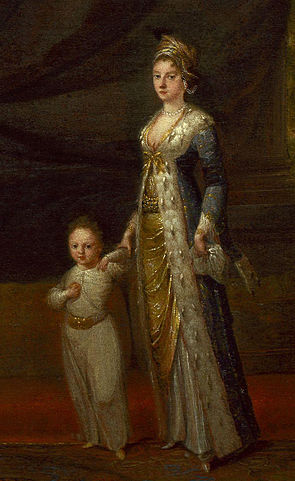Read in TravelTrails: The First Inoculation against Smallpox

The Greek doctor Emmanuel Timonis (1669-1720) from Chios and the smallpox vaccine
Among the wealth of historical information recorded by Western European travelers and analyzed in the digital platform TravelTrails, there is also information of medical interest including vaccination.
In 1712 the traveler Aubry de la Mottraye (1674?-1743) describes the technique of inoculation, an early method of vaccination based on traditional practices from Thessaly and Macedonia, adopted by the Chian doctor Emmanuel Timonis (1669-1720) to achieve immunity against smallpox (variola).
According to the practice of inoculation, a small sample of fluid from the hives of an infected person was introduced into the skin of a healthy person. The wound was then covered, and the person kept under medical supervision, until he contracted a light form of the disease and then recovered; the assumption was that he had attained some degree of immunity against the disease.
De la Mottraye relates: "I then went to visit Dr Timonis, one of my good friends who is well known to the society of letters for his [scientific] expertise, and above all for the inoculation of smallpox (petite variole). He wanted to revive an old practice that was once very widespread in Greece, as one of the most beneficial options, mainly for preserving the beauty of women and ensuring the lives of both sexes."
De la Mottraye cites in the appendix a relevant Latin treatise by Timonis. The scientific findings of the Greek doctor were communicated to the Royal Medical Society of London in 1713 and the following year they were published in the journal Philosophical Transactions, along with the findings of Timonis’s colleague Jacob Pilarinos (1659-1718) from the island of Cephalonia. These medical findings caused a lot of skepticism in Western Europe, because the method was based on the empirical observation of folk customs, often perceived with prejudice.
Nonetheless. the practive of inoculation persisted in the East. When the son of the English ambassador in Constantinople fell ill, his mother Mary Montagu resorted to Timonis’s practice of inoculation. In a letter in April 1717, she describes in detail how the Greek populations of the Ottoman Empire systematically applied this method to deal with the spread of smallpox.
Upon her return to England in 1721, Montagu not only inoculated her daughter, but also convinced members of the English royal family of the effectiveness of the practice. Despite the initial objections of the medical community in 1754 the Royal College of Physicians of London proclaimed that the method was extremely beneficial to mankind.
After many years of research and laboratory testing, in 1798 Edward Jenner proposed a new methodology, replacing the infected specimen by humans (smallpox) with a sample from infected cows (cowpox) in order to minimize the risks to humans (hence, the term vaccination from vacca, i.e. cow). The practice was crowned with success and was finally adopted as the optimal method for dealing with smallpox, which since 1979 is considered to have been eradicated.
Nevertheless, objections, experimentations and failures were recorded until the beginning of the 19th century when the medical doctor William Wittman traveled to the East as a member of the British military expedition to the Ottoman Empire where he consulted patients. He made several notes on the practice of inoculation, focusing on the risks and benefits of the method.
This material is systematically indexed in TravelTrails under the headings/subjects 'Drugs, Healing Methods, Treatments' and 'Diseases', and tags/keywords such as 'Inoculation', 'Smallpox', 'Plague'.